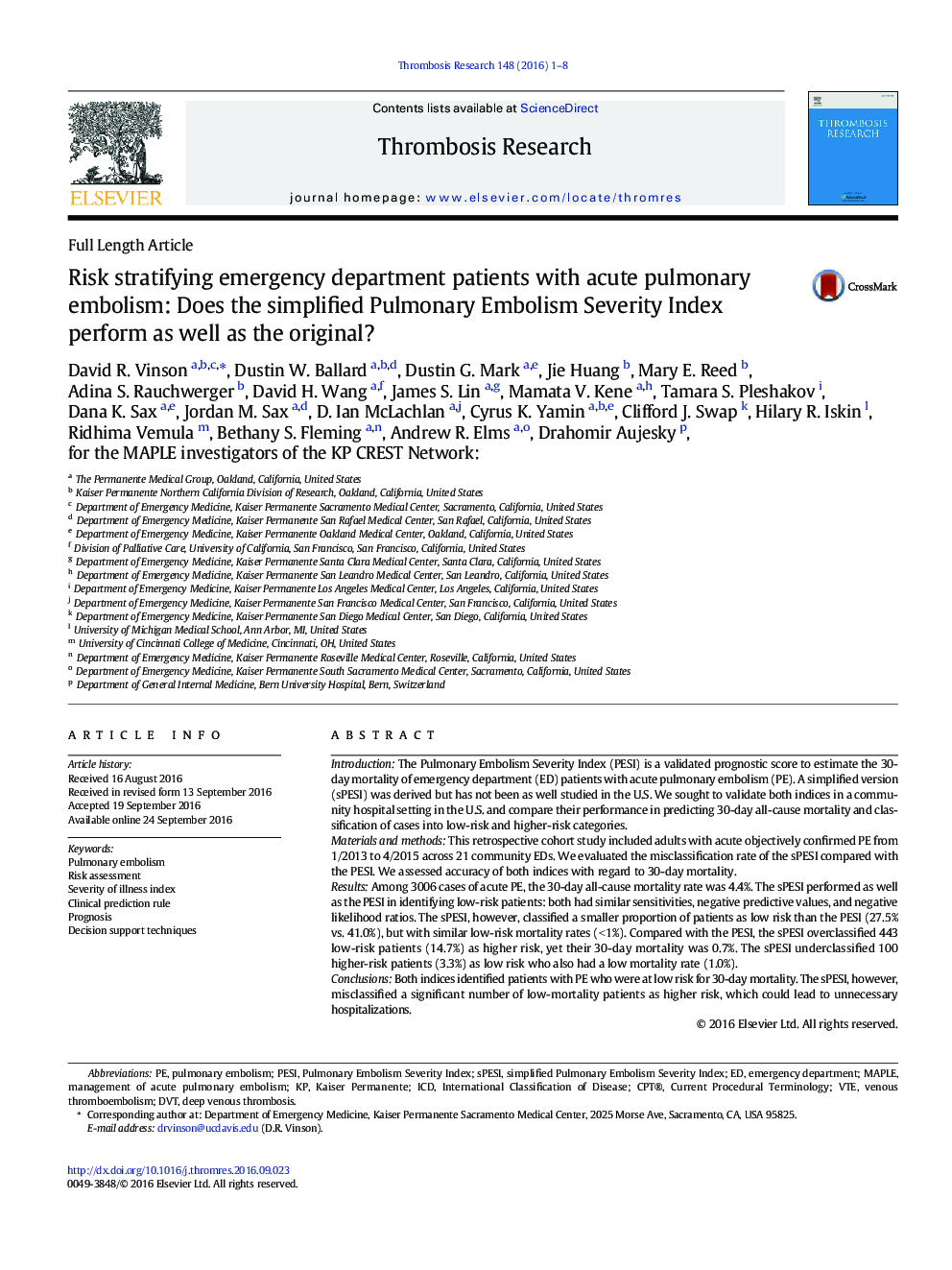| کد مقاله | کد نشریه | سال انتشار | مقاله انگلیسی | نسخه تمام متن |
|---|---|---|---|---|
| 5622195 | 1579195 | 2016 | 8 صفحه PDF | دانلود رایگان |

- The original and simplified PE Severity Indices accurately identify low-risk patients.
- Low-risk patients on both indices have 30-day all-cause mortality <Â 1%.
- The simplified Index misclassifies 15% of low-mortality patients as higher risk.
- Misclassification by the simplified Index could lead to unnecessary hospitalization.
IntroductionThe Pulmonary Embolism Severity Index (PESI) is a validated prognostic score to estimate the 30-day mortality of emergency department (ED) patients with acute pulmonary embolism (PE). A simplified version (sPESI) was derived but has not been as well studied in the U.S. We sought to validate both indices in a community hospital setting in the U.S. and compare their performance in predicting 30-day all-cause mortality and classification of cases into low-risk and higher-risk categories.Materials and methodsThis retrospective cohort study included adults with acute objectively confirmed PE from 1/2013 to 4/2015 across 21 community EDs. We evaluated the misclassification rate of the sPESI compared with the PESI. We assessed accuracy of both indices with regard to 30-day mortality.ResultsAmong 3006 cases of acute PE, the 30-day all-cause mortality rate was 4.4%. The sPESI performed as well as the PESI in identifying low-risk patients: both had similar sensitivities, negative predictive values, and negative likelihood ratios. The sPESI, however, classified a smaller proportion of patients as low risk than the PESI (27.5% vs. 41.0%), but with similar low-risk mortality rates (<Â 1%). Compared with the PESI, the sPESI overclassified 443 low-risk patients (14.7%) as higher risk, yet their 30-day mortality was 0.7%. The sPESI underclassified 100 higher-risk patients (3.3%) as low risk who also had a low mortality rate (1.0%).ConclusionsBoth indices identified patients with PE who were at low risk for 30-day mortality. The sPESI, however, misclassified a significant number of low-mortality patients as higher risk, which could lead to unnecessary hospitalizations.
Journal: Thrombosis Research - Volume 148, December 2016, Pages 1-8